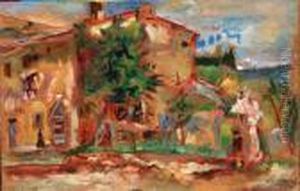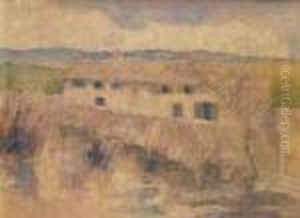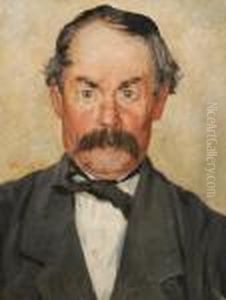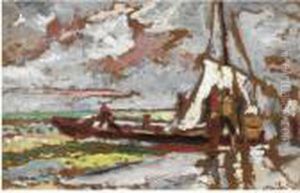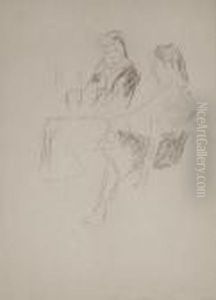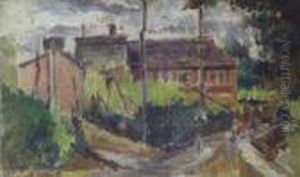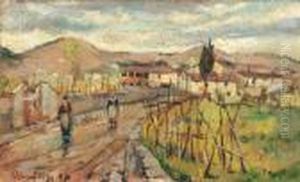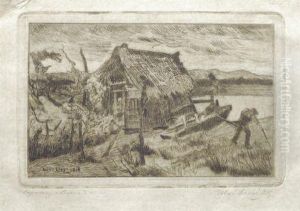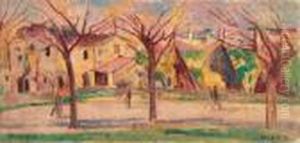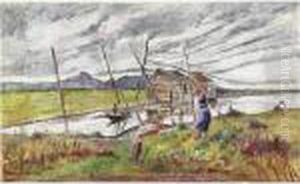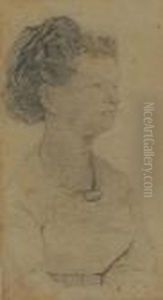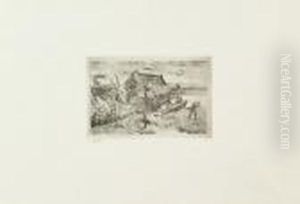Ulvi Liegi Paintings
Ulvi Liegi was an Italian painter, born in 1858 in Livorno, Italy, and passed away in 1939. His artistic journey is a reflection of the diverse influences and transitions in the art world during his lifetime, especially within the context of Italian art. Liegi's work spans across several styles, primarily focusing on landscape and genre painting, and he is often associated with the Post-Macchiaioli movement, an evolution of the Macchiaioli group which was Italy's counterpart to the French Impressionists.
Liegi's early life in Livorno, a vibrant port city, provided him with a rich tapestry of visual experiences that would shape his artistic vision. He studied in Florence, a hub for artists of the time, where he was exposed to the Macchiaioli group's innovative use of light and color. However, Liegi's style evolved beyond the Macchiaioli's focus on capturing the fleeting effects of light on the landscape, incorporating a broader range of subjects including urban scenes and daily life, showcasing his versatility as an artist.
Throughout his career, Ulvi Liegi exhibited his works in major Italian cities and was recognized for his contributions to the art world. His paintings are characterized by a sensitivity to atmosphere and a nuanced use of color, capturing the essence of his subjects with both realism and emotional depth. Despite his adherence to certain traditional techniques, Liegi's work also reflects a willingness to explore the changing dynamics of modernity, making him a significant figure in the transition from 19th to 20th-century Italian art.
After his death in 1939, Ulvi Liegi's contributions to Italian art have continued to be celebrated, with his works held in various public and private collections. His legacy is that of an artist who skillfully bridged the gap between the traditional and the modern, reflecting the complexities and beauty of the world around him with a unique clarity and sensitivity.



